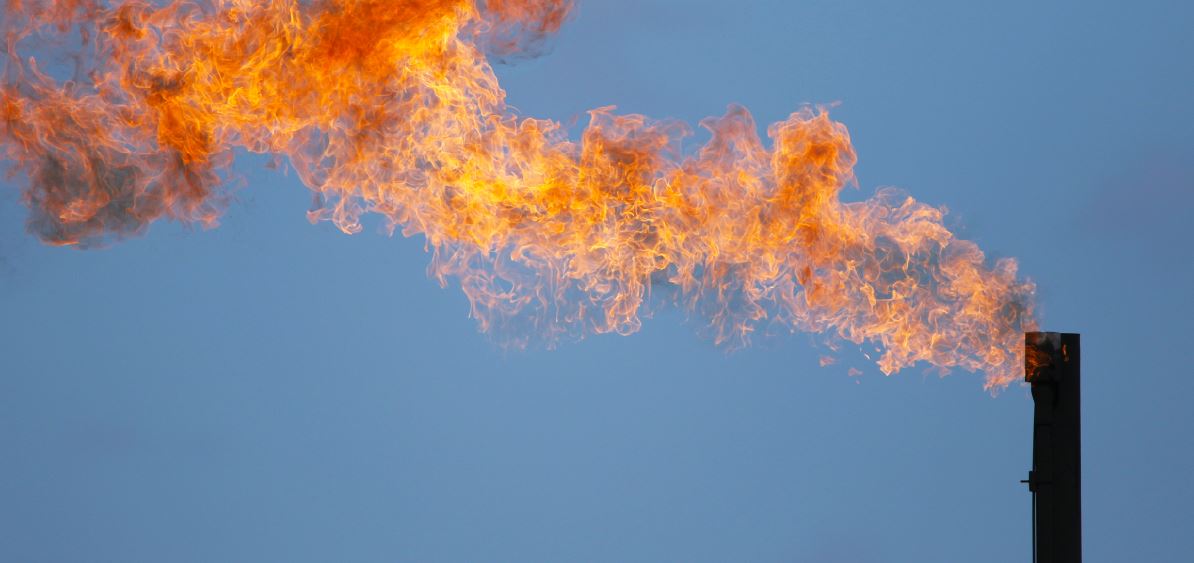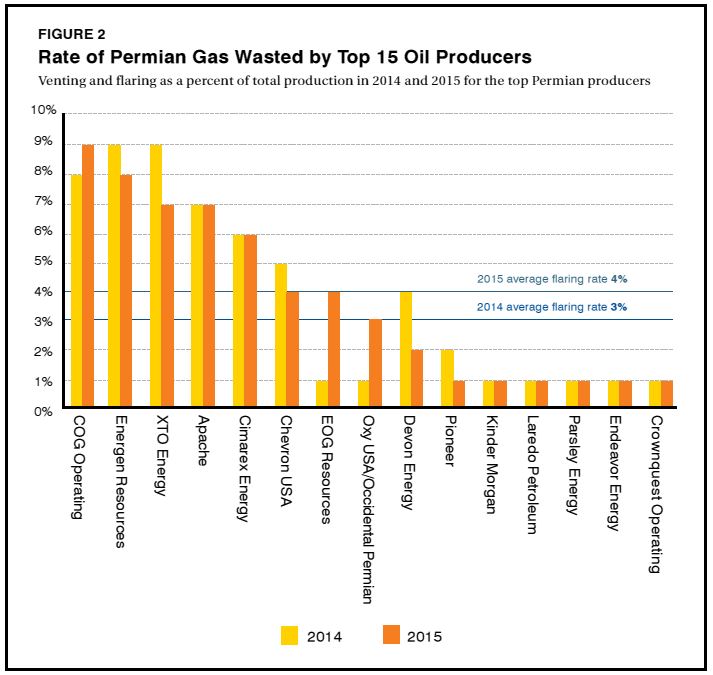My clients regularly complain of flares from wells on their property. Most leases don’t require royalty payments on flared gas, so their royalty is going up in smoke. Flares often don’t function properly, resulting in emissions of toxic gases. Flares make noise.
 The Environmental Defense Fund recently released an excellent report on flaring in the Permian Basin, Permian-Flaring-Report-2017. EDF analyzed flaring and venting by 15 major producers in the Permian for the years 2014-2015. Here’s what they found (click on image to enlarge):
The Environmental Defense Fund recently released an excellent report on flaring in the Permian Basin, Permian-Flaring-Report-2017. EDF analyzed flaring and venting by 15 major producers in the Permian for the years 2014-2015. Here’s what they found (click on image to enlarge):
On average, these operators flared at a rate of 3 to 4 percent of their production in these years, more than 80 Bcf of gas. At $3/mcf, that’s $240 million of gas.
An operator must obtain a flaring permit from the Railroad Commission to flare gas. But the operator does not have to make any showing that it has no alternative to flaring, or that not flaring would cause waste or prevent the company from producing its fair share of resources. EDF recommends revisions to the RRC’s regulations to require an operator who wants a flaring permit to first show that it has no alternative, that not flaring would cause waste or impair its correlative rights, investigate the availability of gathering lines in the area, provide a map of the gathering lines and information about the lines’ capacity, and have a plan to hook the well into the system to sell the gas as soon as feasible. EDF also recommends that operators use best available flaring technologies to assure combustion of all flared gas (a requirement presently only applicable in the Barnett Shale), and to require operators to report vented and flared volumes separately. EDF also investigated the economic feasibility of using technology options to prevent flaring, such as installing compression and compressing the gas so that it can be moved by truck.
 Oil and Gas Lawyer Blog
Oil and Gas Lawyer Blog



